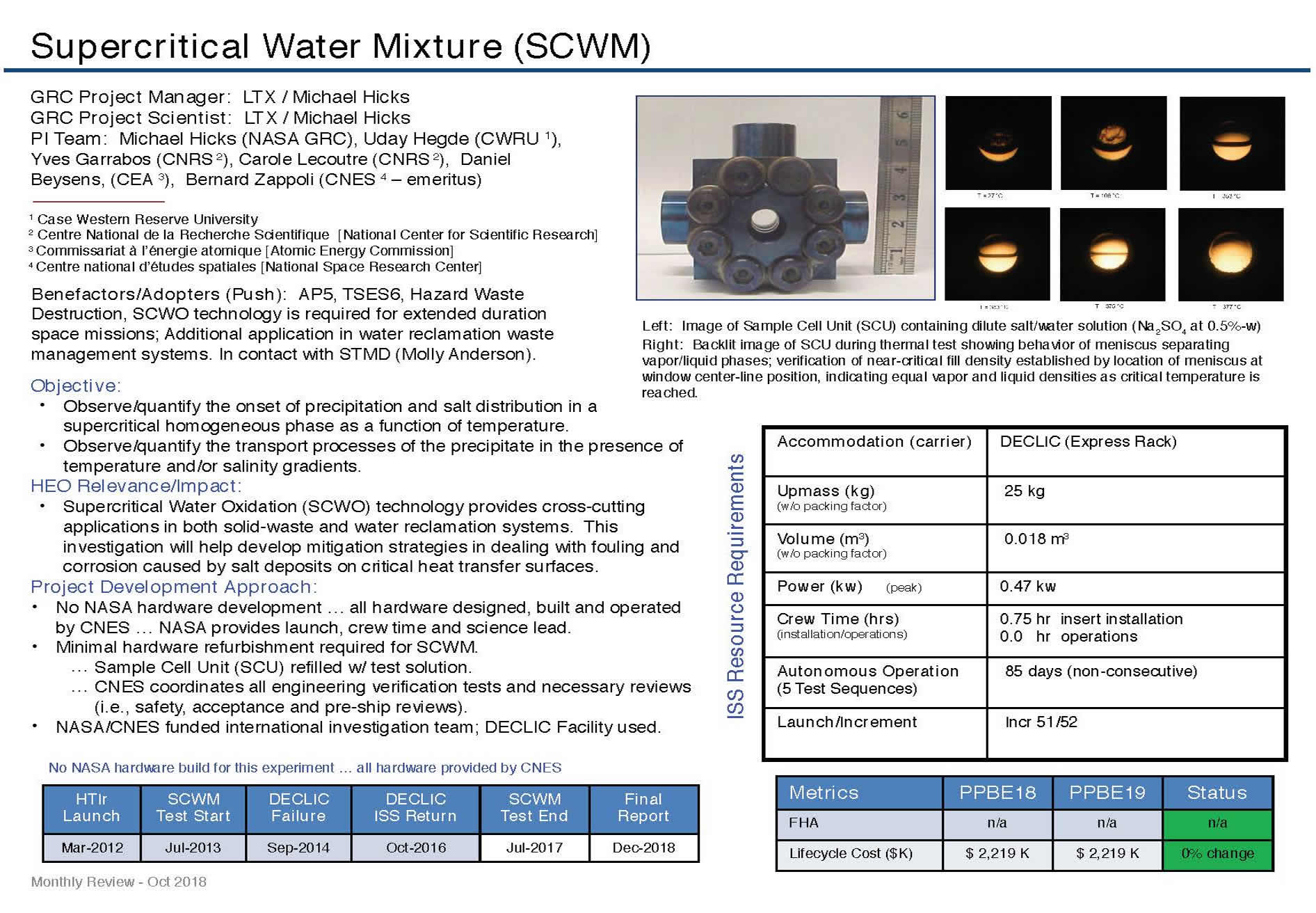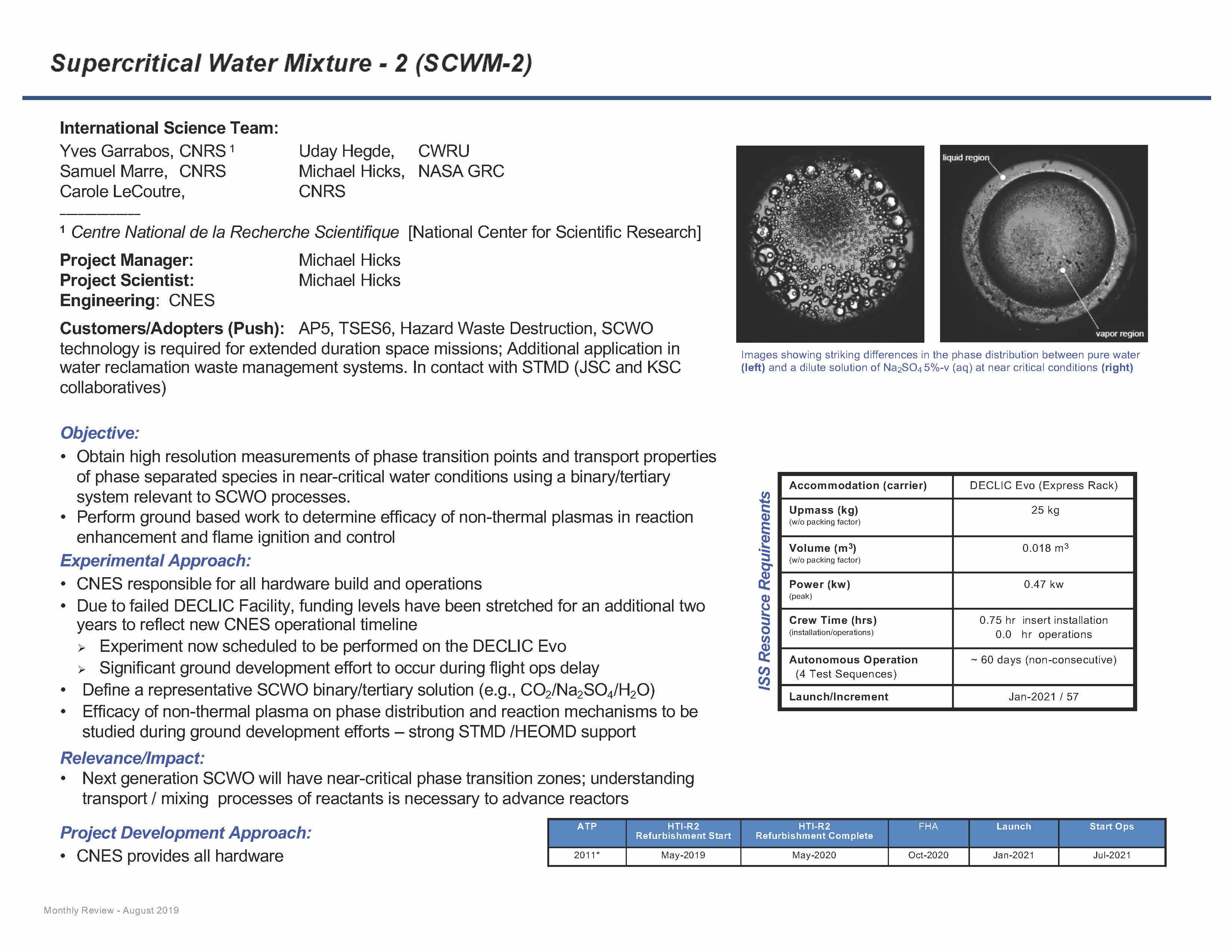SCWM, SCWM-2
Supercritical Water Mixture (SCWM)
The SCWM investigation is a follow-on experiment to the High Temperature Insert (HTI) investigation and serves as a prelude to the study of oxidative processes in a future supercritical water oxidation investigation. The SCWM experiment is the first of two planned re-flight experiments involving the re-flight of a refurbished High Temperature Insert (HTIR).
These supercritical water re-flight experiments are intended to study unit processes of practical concern that arise in systems using supercritical water for waste management and resource reclamation. Water polarity decreases substantially as the critical point is traversed so that ionic salts, normally soluble in water, begin to precipitate out of solution. These precipitates tend to deposit on heated surfaces, the reactor walls, and inflow and outflow valves which hinder the operation of the supercritical water processor.
The first experiment, SCWM, using a refurbished HTI, the HTI-R, investigates the precipitation and dissolution of a salt (Na2SO4) as the ionic solution transitions from subcritical to supercritical. The investigation focuses on the extent of precipitation, the agglomeration mechanism in 0-g, and the transport of the precipitate under a temperature gradient.
The objective in this investigation is to study the formation of salt precipitation and its transport in the presence of a temperature gradient by filling HTI test cells (originally filled with pure water), with a dilute mixture of salt and water at the critical density of water. This new mixture allows investigators to observe an anticipated shift in the mixtures critical point (i.e., temperature and pressure) along with precipitate formation, mass agglomeration (i.e., clustering), and transport at near such critical conditions (i.e., just above and below the critical point of pure water).
Earth Applications
The Supercritical Water Mixture (SCWM) experiment performed in the DECLIC facility will provide information to enable the development of new (SCWO) reactors for use on Earth. These new reactors will be designed to exploit separation mechanisms that take place when precipitated salts are transported across regions where water transitions from supercritical to subcritical phases and will rely on internally generated heating from the oxidation of organic material in wet waste streams. It is expected that these new reactors will significantly reduce operating costs and extend SCWO technology beyond its currently limited application base and benefit future spinoffs in clean energy, waste disposal and water reclamation applications.


